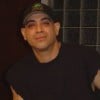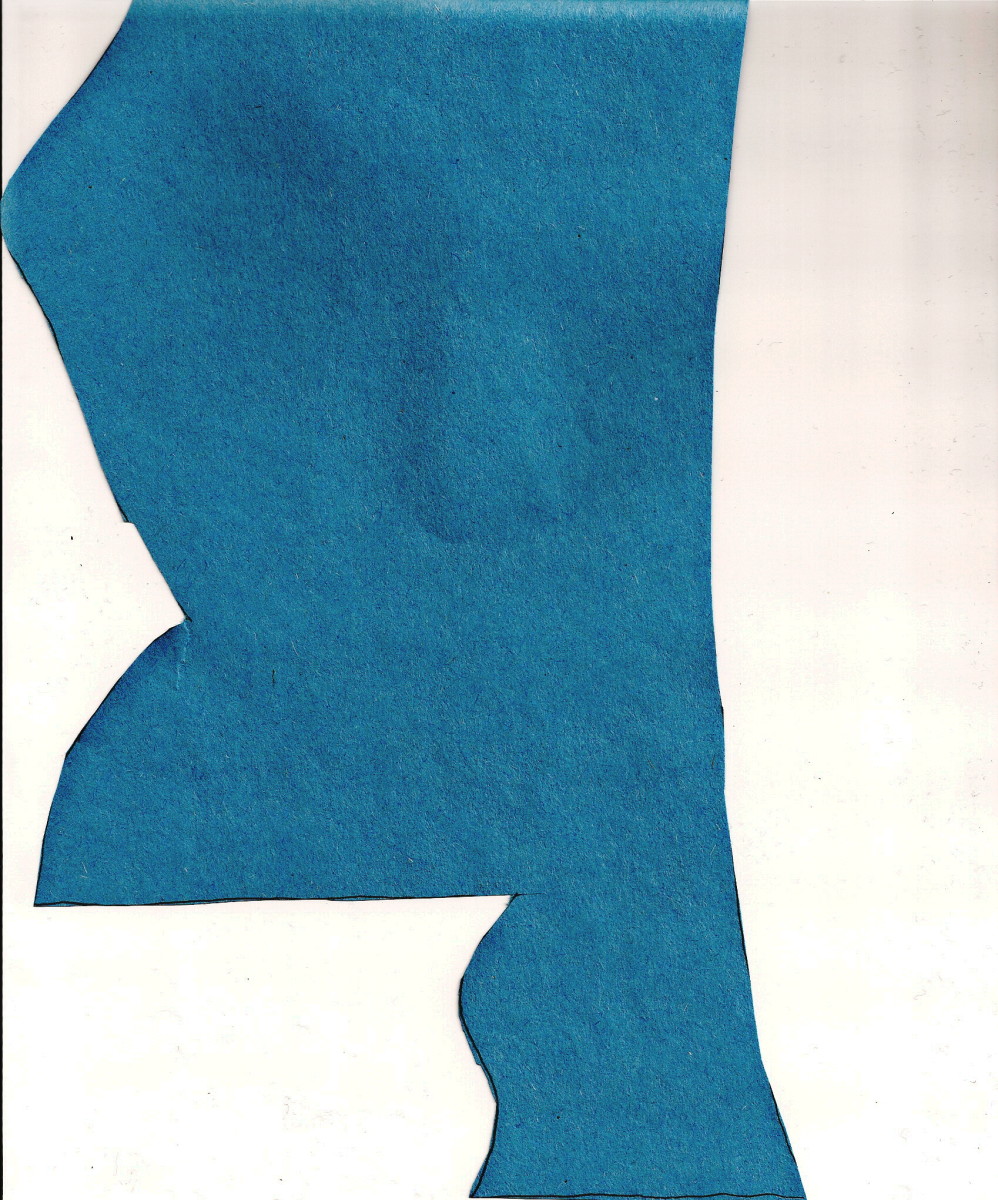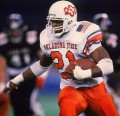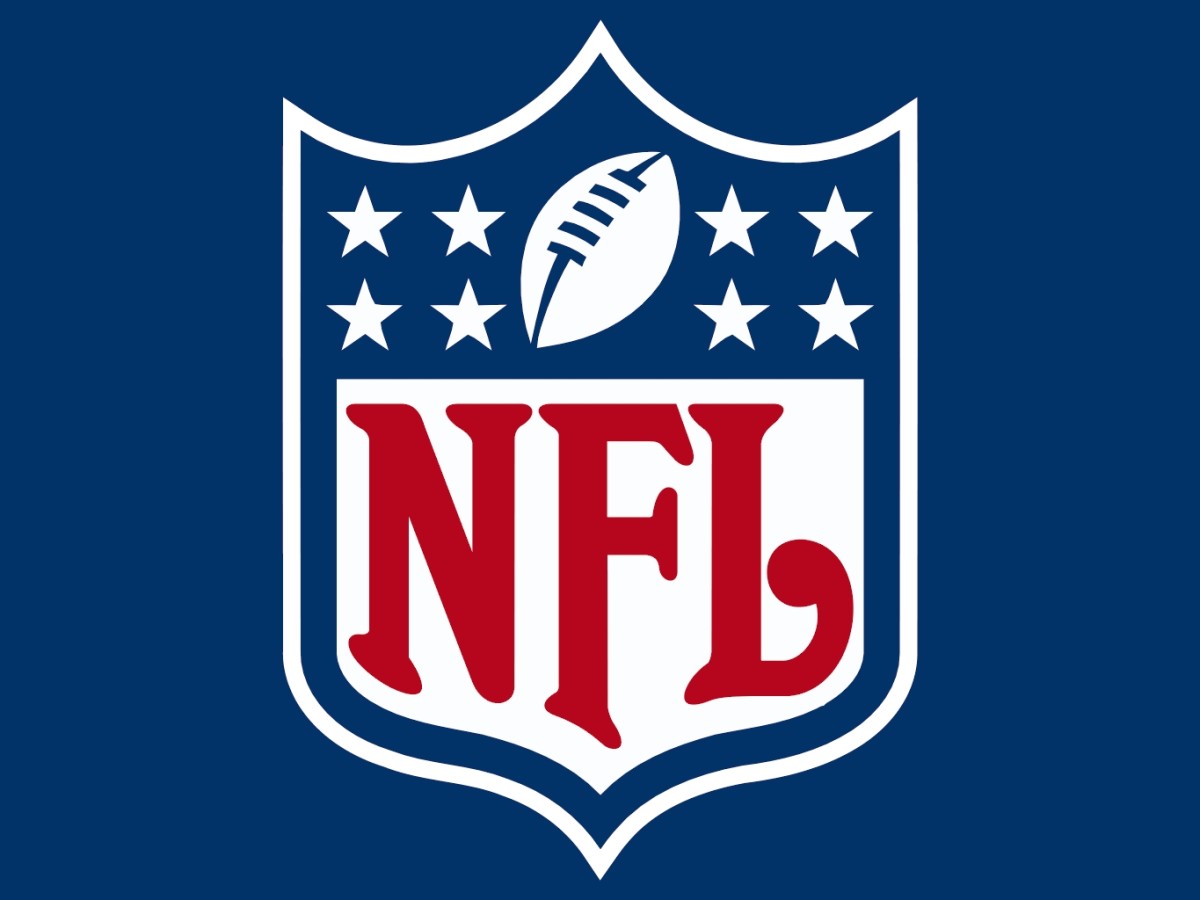- HubPages»
- Sports and Recreation»
- Team Sports»
- American Football
MOVING THE CHAINS: The Journey Of The Black Quarterback
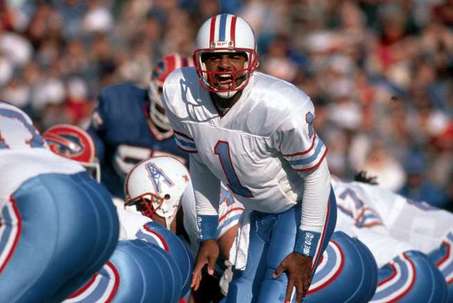
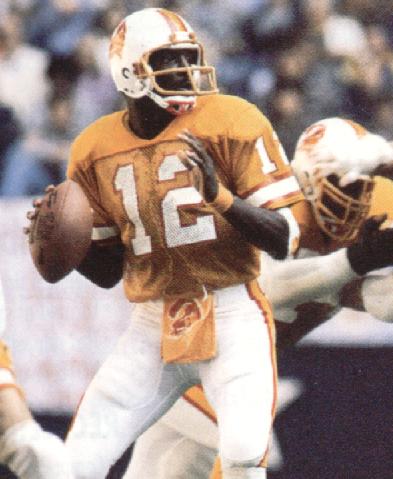
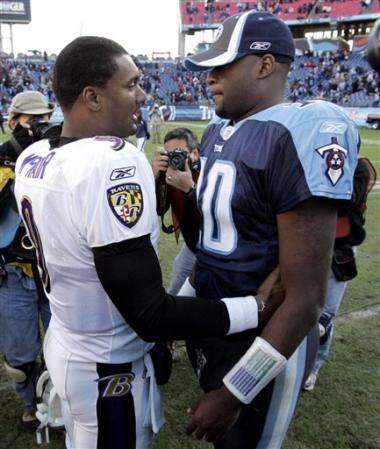
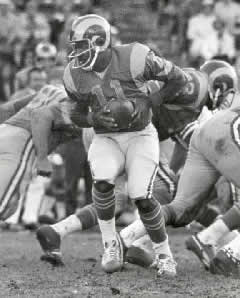
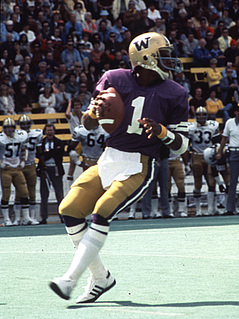
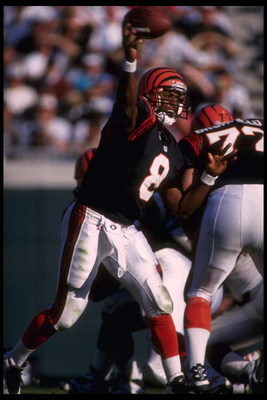
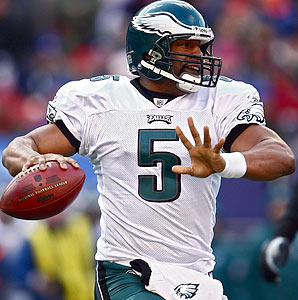
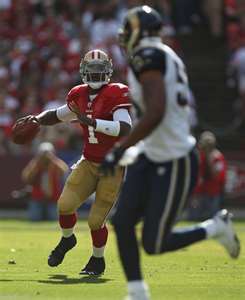
FIELD GENERAL
Imagine you're in the middle of a frigid blustery December Sunday afternoon, stalking the hallowed grounds of Lambeau Field. Blankets of snow frozen to your sore ribs. 56,000 bloodthirsty fans, fueled by whiskey, bratwurst and raw unadulterated passion, callling for your head. With your team down by six, you've just spearheaded a 63 yard drive, with 21 to go for the winning touchdown. Fourth and goal, no timeouts. With 26 seconds on the clock your mind comes into focus with your inner clock. Tick-tick-tick-TICK-tick-tick . The last play never happened, although getting hammered for a 12 yard loss by that freak 265 lb. defensive end, surely did happen and you better not forget it. The lights are flickering inside and you're in a daze. "Where the hell was my left tackle on that play?" you murmur to yourself. " Ok, now get it together." Your team is in a rambunctious state, with the game on the line. There is an odd mixture of excitement, terror and panic. The troops are getting restless. "LET'S GO HUDDLE UP!" You've got to get them as focused as you are, " Listen up, nobody talks in my huddle but me. Relax boys, we got them right where we want them. This is what we play for, all of you are gonna make this play work, because you're not going to want to let your brother down that's next to you. This is your moment, now seize it !" 10 sets of eyes staring at you, hanging on your every word. It is in that moment, through the fog of cold breath, and a shaking stadium, in the middle of a frozen hell, you know that you've got them, and it's gonna work. They believe in you and you believe in them. " We are going ZING TO ONE BOOM- PRIDE 131- CRUNCH- X- STAR, ON TWO....READY...BREAK!" You think to yourself," They're ready, we got this."
As you and your teammates hustle to the line, the clock continues to tick inside of you, when all of a sudden. Oh no, that doesn't look right. Look at that safety playing robber out on the edge. Only three things can happen if I go out there or in the middle, and two of them are bad. Wait a second,(tick-tick-tick), who has got 52? I don't need that in my life right now....ALERT ALERT 52/52 SCOUT, CHECK CHECK, OMAHA WE GO, READY GO!!
The ball snaps, the defensive end who has questioned your masculinity all day is hot on your heels, and up the middle comes good old number 52. He is not as fast as he once was, which is to say, he isn't a Lamborghini anymore, just a Porsche. Stand your ground, everything is going so fast. The stadium shakes even more ferociously from the crazed fans and the collisions of a humanity. The running back slips the block, and runs out into the flat. You sell the pump fake to the robber out on top. When he breaks, you pull the trigger on the screen pass. 22 yards later, your team reaches pay dirt, after an electrifying run by your elusive back. The blockers were led by the wide receiver who took his man down field, and knocked him out of the play. Just like you worked on in practice all week. You think to yourself, " Damn, I love my guys."
Such is the life of an NFL quarterback, for one play in a series of many. It is the most scrutinized and toughest position in all of American team sports. As the quarterback you are the man of many hats. You're a daddy, a big brother, the CEO of a ruthless high stakes empire. You're a field general who's orders are to be carried out, without question. While, the number of black quarterbacks is growing every year, the journey of the black quarterback has been filled with many obstacles and pot holes along the way. Some have excelled and some have failed, but you get the sense with Michael Vick and more recently Cam Newton being drafted number one, that the culture of thinking is changing in the NFL. Big time guaranteed contracts have led to this change in many ways. Petty things such as race, play a minor role as compared to yesterday, with millions of dollars at stake now. Almost all head coaches in the game, with their jobs on the line know that it is a win now mentality in the National Football League. Regardless if a man is black, white, red or blue. the objective is to win. The best guy almost always wins his position now. Well, maybe not always, but he usually does get an honest chance to control his destiny. It wasn't always that way. These are just a few of the pioneers in " America's Game", whose story should never be forgotten. Not too long ago black quarterbacks were told that they didn't haven't the mental capacity to handle the position. Here are a few brave field generals, who put that stereotype nonsense to rest.
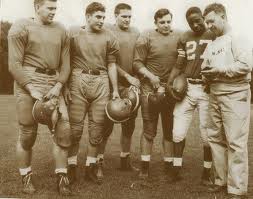
THE JACKIE ROBINSON OF QUARTERBACKS: WILLIE THROWER
HOMETOWN: NEW KENSINGTON, PENNSYLVANIA
COLLEGE: MICHIGAN STATE UNIVERSITY
CARRER: CHICAGO BEARS (1953) WINNEPEG BLUE BOMBERS (1954-1956)
Only the most ardent football fan can tell you who the first black quarterback to play was. While Jackie Robinson is universally recognized by the sports world for his accomplishments on and off the baseball field, Willie Thrower's story has been swept under the proverbial rug of sports history. Willie was a sensational athlete from western Pennsylvania, who led his high school to state championships as a halfback and quarterback in 1946 and 1947. He was a pure athlete with incredible arm strength, and was recruited heavily by Miami, Georgia and Kentucky. As soon as these universities found out that Thrower was a black athlete with quarterback aspirations, they immediately rescinded their offers. Only Clarence " Biggie" Munn had the foresight to bring Willie in as a backup to All-American Tom Yenwick. The gregarious Michigan State coach would only use Thrower sparingly in his college career, But Thrower was always grateful for every opportunity presented to him, and considered Munn his mentor for life. Willie was an integral part of the 1952 National Championship Team, and signed with the Chicago Bears as a free agent in 1953.
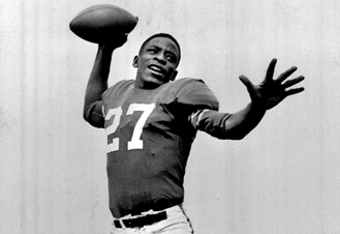
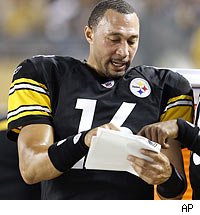
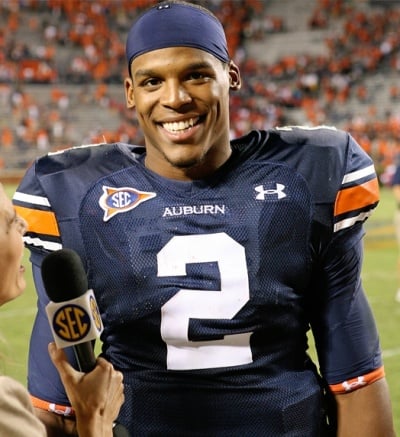
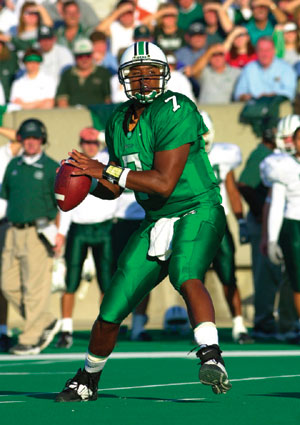
On October 18, 1953, as the Bears were losing to the San Francisco 49ers, coach George Halas decided to bench his veteran signal caller George Blanda, due to shaky play. As Thrower ran onto the field, he felt like he was floating on air. He realized his place in history, and was going to make the most of it. He drove the ball 45 yards going 3 for 8, for 27 yards in passing. Just as he got the ball down to the Niners' 15 yard line, Halas pulled him out and put Blanda back in the game. Thrower was never really given a fair shot, as he always heard whispers knocking his intelligence. At he end of the 1953 season, he was released by the Bears. He would never get another crack at playing in the NFL, but he had made his mark. As he got older, he had pictures in his house, but people never believed him when he told them that he was the first black quarterback in the NFL. Even his own son had cause to be suspicious of the claim. He had heard of Jackie Robinson, and had seen his exploits on the diamond. Because his father was only given that one chance on a cold day in October of 53', it was hard for him to understand that his father accomplished such a dubious feat, that quite frankly, no one remembered. It was only in the his teenage years that he believed his father's claims were valid..
Upon his release, no teams were interested in having a black quarterback and wanted him to switch to the cornerback position. Willie wasn't interested in that and chose to play in the Canadian Football League. After 4 years in the CFL, he separated his shoulder and retired at the age of 27. On February 20, 2002, Willie Thrower died of a heart attack at the age of 71. From Joe Gilliam to Doug Williams to Daunte Culpepper to Cam Newton a debt of gratitude is owed to the man who paved the way for their future.
Every year as I go over the incoming class of football hall of famers. I am always amazed by the "who the hell is that factor" of it all. With so many great players from well before my time, I am amazed that the National Football League doesn't pay homage to this man, the way baseball has done with Jackie Robinson. It is time that Willie is recognized by all races for his moment in gridiron history and his gift to the game.
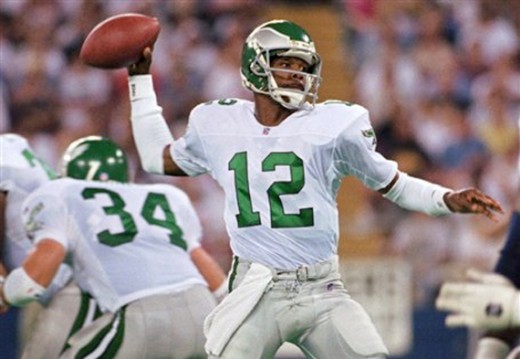
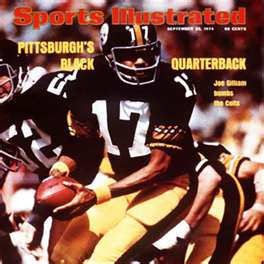
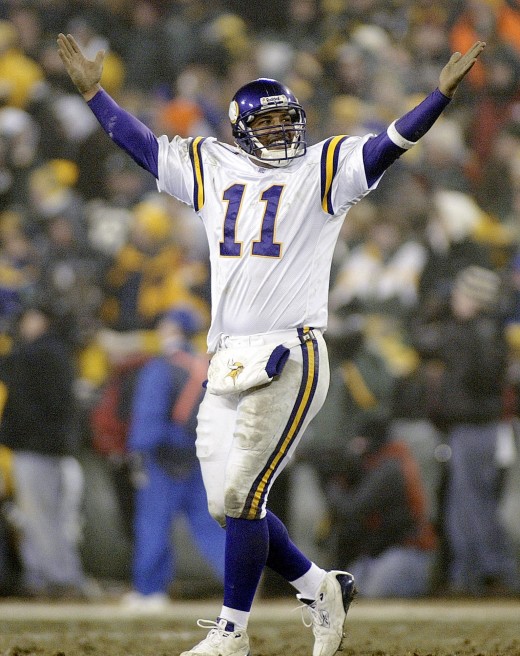
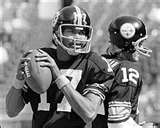
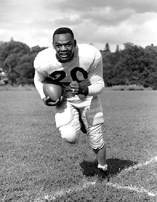
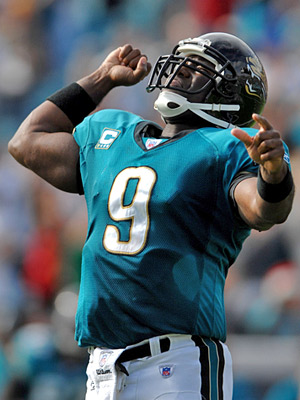
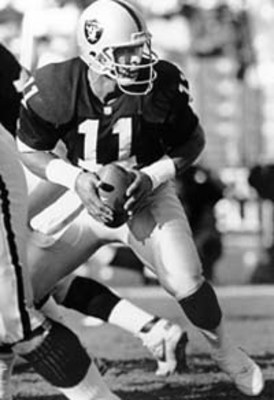
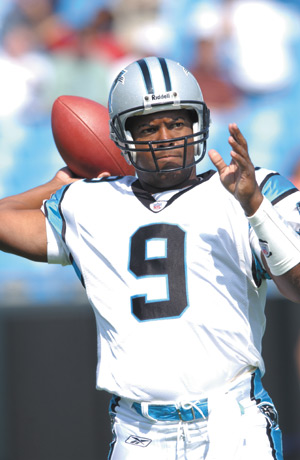
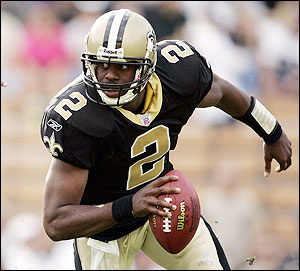
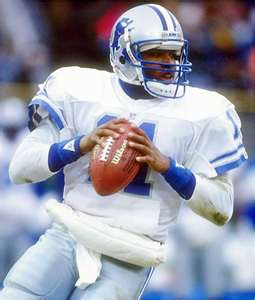
JEFFERSON STREET JOE
HOMETOWN: NASHVILLE, TENNESSEE
COLLEGE: TENNESSEE STATE
CAREER: PITTSBURGH STEELERS (1972-1975)
"Jefferson Street" Joe Gilliam Jr. was the first black quarterback to be proclaimed the starter by an NFL team. He was a highly intelligent, as evidenced by his 150 I.Q, and precise decision making on the field. He was truly a magnificent athlete and player, with the ability to make all the necessary throws expected of an NFL quarterback. After his collegiate years of playing for his father, Joe Sr at Tennessee State, and demolishing all the school passing records, he was drafted in the 11th round of the draft by the Pittsburgh Steelers. Gilliam was blessed with the ability to improvise and stretch out plays. He could hurt you with his scrambling or his accurate arm. In today's game, he would probably most be compared to Donovan McNabb, not as big, but more accurate,especially downfield.
Joe's goal was simple, become an NFL quarterback. He refused to play the game that many franchises did when they drafted black quarterbacks out of college. Instead of handing over the keys to the offense, many coordinators and head coaches would coax the players to take a stab at wide receiver or a defensive back position. Joe would have none of that, and purposely ran slow times at camp during sprints..
During the 1973 season, the players association decided to strike. Instead of joining his fellow teammates, Joe reported to training camp with the knowledge that the job was his for the taking. Upon showing up at camp in great shape, he developed a rapport with rookie receivers Lynn Swann and John Stallworth. Pittsburgh had two quarterbacks in Terry Bradshaw and Terry Hanratty. Both were on strike and there was alot of unrest among the fans and media alike. Ironically, Bradshaw was coming under fire for his perceived lack of intelligence. The running joke in Pittsburgh was that Bradshaw couldn't spell cat if you spotted him the C and the A. Terry Hanratty on the other hand, was always perceived as a leader, but didn't have the physical capabilities to get the job done. By the time the players came back from their strike, Gilliam and his two future hall of fame rookie receivers had a leg up on the competition for their positions. Even then, Bradshaw started the first game of the season on Monday Night Football against the Washington Redskins. He was knocked out in the first quarter with a bum shoulder and Hanratty was knocked silly in the second. With no one else to turn to head coach Chuck Knoll called Gilliams number. In his first possession he hit Swann for a 47 yard strike touchdown pass and led his team to a 21-16 victory.
With both first string and second string QB's shelved, the Steelers went to war with Joe. He would beat the Baltimore Colts in his second game, and the sky appeared to be the limit. Bradshaw was getting healthier, and with the pressure on, it was time for Joe to shine. He led the Steelers to a 4-1-1 record. Chuck Knoll was a ball control oriented coach, who felt Gilliam was a little too much of a gunslinger. Bradshaw loved to pass, but he would hand the ball off to Franco Harris when called upon. Joe always felt like he had to throw 5 touchdowns a game to keep his job and would consistently audibilize the play at hand. As Bradshaw regained his arm strength, the reins were handed back to him.
Joe Gilliam would never be the same. In his mind, he did not lost his job fair and square and began carrying grudges towards the Steelers. Pittsburgh would beat the Vikings for a Super Bowl championship that year, after an 8 game strike shortened season. Gilliam felt like his treatment was unfair and turn to solace in the arms of drugs and alcohol. His behavior became erratic and many black teammates who had looked up to him on the team, were very disappointed in his actions. Defensive End L.C Greenwood and Mean Joe Greene tried to have interventions but to no avail. Many of his teammates would later say that Gilliam was kind of spoiled, because of his background as a coaches' son. Bradshaw had never sat in his life and the benching gave him an awareness to accept the challenge that Gilliam was presenting,. His all around play was developing. Joe never accepted the challenge that Bradshaw offered, instead becoming a drugged out petulant child. His mail box overflowed with hate mail and death threats from so-called Steeler fans, who only hated him because of his color. One day Ernie Holmes snatched drug paraphernalia out of his hands, in the middle of the locker room and flushed them down the toilet. He then proceeded to dress his friend and teammate down in front of everybody and told him to grow up. By now Joe was very rebellious towards anyone associated with Steelers football, and the downward spIral of drug addiction consumed his once promising career.
Two years and another Super Bowl Championship later, the Steelers had enough, and released him. In many ways his demise parallels that of Negro Leagues baseball legend Josh Gibson. Much like Gilliam, Josh knew he could not only compete on the big stage, but dominate. Neither was ever given that opportunity to do what they loved. In the end, the demons that manifested inside of them, eventually devoured them. Gilliam would become homeless and pawned off his Super Bowl rings to fund his addictions. He tried to catch on with the New Orlean Saints as well as The USFL's Washington Federals, but the drugs had destroyed his gift. He would die at the young age of 49.
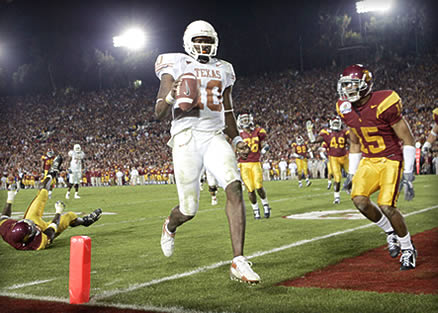
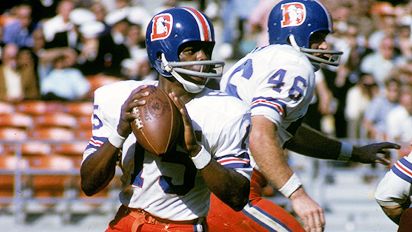
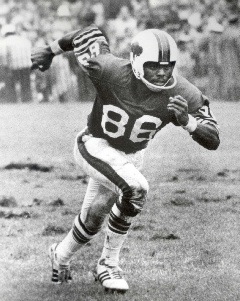
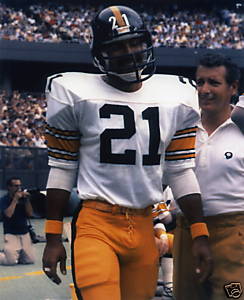
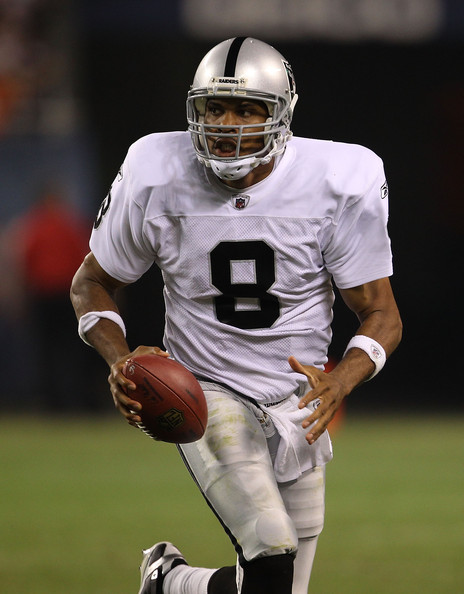
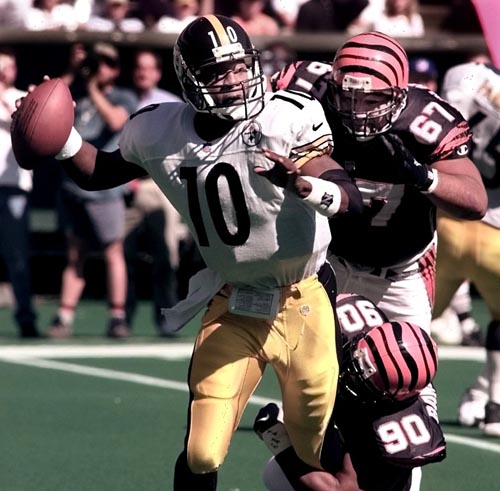
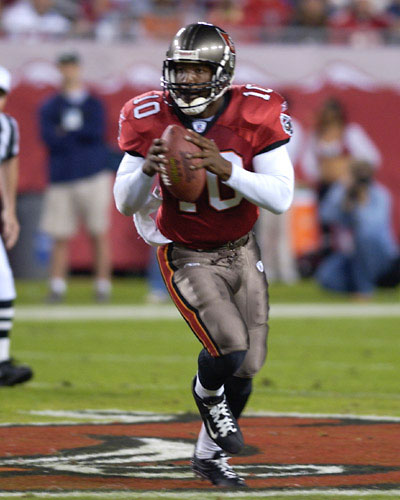
MARLIN BRISCOE THE MAGICIAN
HOMETOWN: OMAHA, NEBRASKA
COLLEGE: UNIVERSITY OF OMAHA
CAREER: DENVER BRONCOS (1968), BUFFALO BILLS (1969-1971), MIAMI DOLPHINS (1972-1974), SAN DIEGO CHARGERS (1975), DETROIT LIONS ( 1975), NEW ENGLAND PATRIOTS (1976)
After a successful collegiate career at Omaha University, Marlin Briscoe was drafted in the 14th round, by the Denver Broncos. Legendary coach Lou Saban had drafted Briscoe strictly as a receiver, and would rather play a blind man than a black man at the quarterback position. While being drafted, Marlin struck upon a deal that would give him a "fair" tryout at the QB position. During a game against the Boston Patriots, starting quarterback Steve Tens broke his collarbone, and out of necessity, Saban gave Briscoe his shot. The fledgling AFL was in dire need of players and color was not as much of an issue. The game ended when the "Magician" drove his team 86 yards, and scored on a keeper from the one, with time running out. He became the first black quarterback to start in the AFL the next week, when he led his team to victory versus the Cincinnati Bengals. He and Saban never saw eye to eye, and Briscoe harbored an inner loathing of the man, even though he respected his football mind.
He finished the season with 14 touchdowns, 1589 yards passing and 308 rushing yards. He was runner-up to Bengals running back Paul Robinson in voting for Rookie of the Year. In many ways he was comparable to Michael Vick. He didn't have the speed of Michael ( only Deion has that kind of speed) but he was a much more efficient passing the ball, especially downfield, and he was just as elusive.
During the off season of that year, he learned of Saban's secret plan to have him replaced. A crushed Briscoe asked for his release and it was granted. Marlin went to play in the CFL and he hated it. The Buffalo Bills offered him a chance to come back to the league as a wide receiver and he accepted. He made a couple of spot starts at the QB position, due to injuries, but the Bills stuck to their guns in using him primarily as wide receiver. He actually excelled at the position and in 1971 he made the All-Pro team. He finished that year with 57 receptions, 1,036 yards and 8 touchdowns. Lou Saban again sprang up into his life, as he became the head coach of the Bills. He was immediately traded to the Miami Dolphins.
As much as he despised Saban, he admired Miami's coach Don Shula. Though Shula used Briscoe as primarily a receiver, he did employ packages in which Briscoe was the signal caller. He even made of a few starts when starter Bob Griese went down with injuries, and had success. On a different team, in a different time, he always felt like Shula would have given him a legitimate shot. He was a vital cog on the 1972 undefeated Miami Dolphins team.
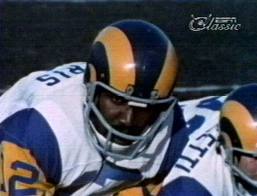
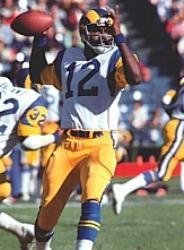
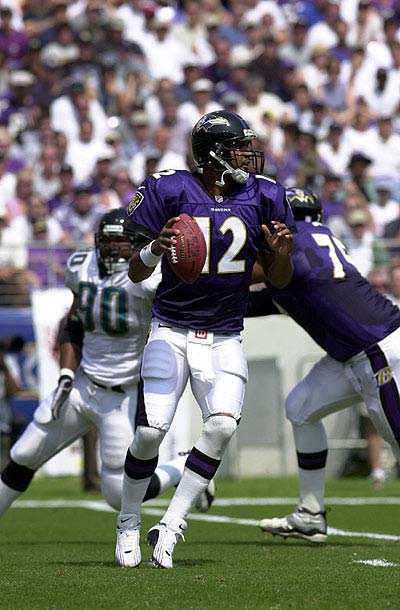
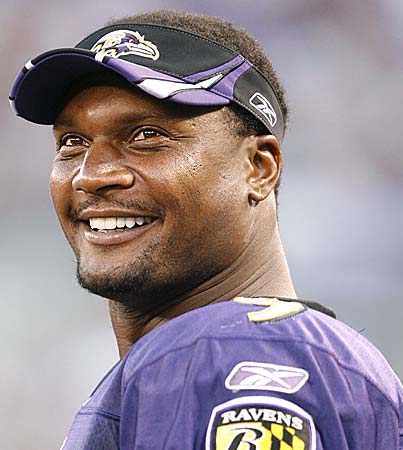
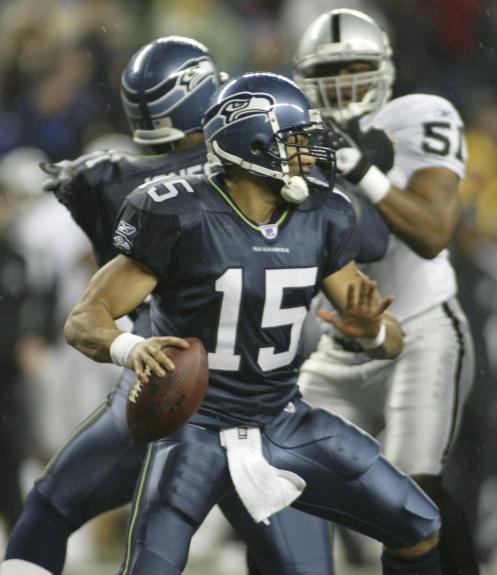
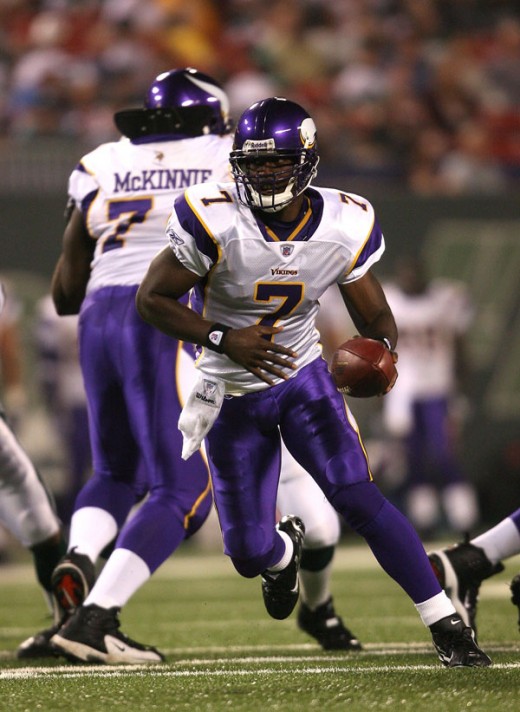
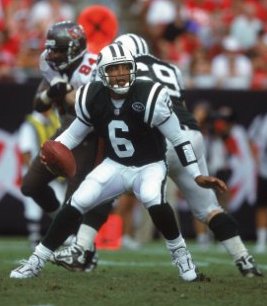
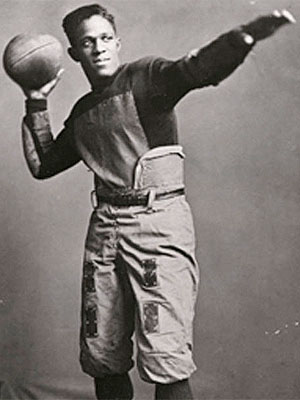
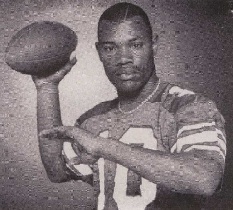
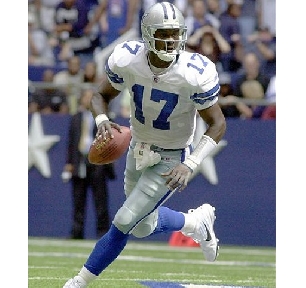
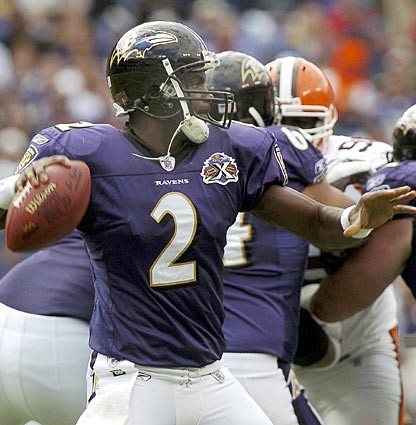
JAMES "SHACK" HARRIS
HOMETOWN: MONROE, LOUISIANNA
COLLEGE: GRAMBLING STATE
CAREER: BUFFALO BILLS (1969-1971), LOS ANGELES RAMS (1973-1976) SAN DIEGO CHARGERS (1977-1979)
James Harris often reminisces about the day that changed his life. He was sitting in his small dingy living room watching Martin Luther King deliver his " I Have A Dream " speech on the family's black and white television. When Dr. King said, " One day it will not be the color of your skin, but the content of your character, that defines you as a person." The words resonated within the young boy and he knew immediately what he wanted to do in life. He wanted to become President of the United States. Fortunately, for the football world, he learned the meaning of the word assassination, and decided that being an NFL quarterback was a more realistic goal and much safer.
James Harris or " Shack", as he was affectionately called because of his meager living conditions in Monroe, La.,loved football and dominated his pee-wee leagues through high school. Many D-1 universities recruited him, but not as the quarterback that he envisioned himself to be. It was the same ridiculous argument, that even though he had size and was athletic enough, he lacked the mental capacity to handle the decision making element of the position. What a supercilious notion, that a highly intelligent, honor roll prep student athlete couldn't be counted on as a leader, but that's the way it was back then. That is when Shack met, next to his father, the most important man in his life.
Legendary Grambling State coach, Eddie Robinson saw James play in a high school game, and knew he had to have him on his team. Coach Robinson had recently been challenged by sports reporter Howard Cossell, to produce a quarterback for the NFL. Cossell and the coach had an outstanding relationship, but the friendly ribbing lit a fire under Robinson. As arrogant and abrasive as Howard was on the air, he was always a man of class, character and fair play. He was well aware of the " old boy network" that governed football, and had admired Robinson's ability to manufacture wide receivers, linebackers and defensive backs. Surely, if anyone could groom a future black quarterback in the NFL, it had to be Coach Robinson. After a spectacular collegiate career at Grambling which included a 24-5 record and 5 SWAC championships, Shack absorbed his lessons well and was drafted by the Buffalo Bills. The Bills saw him as a more athletic Roman Gabriel type, but they also had a need for tight ends. During contract negotiations, Shack became apprehensive when Buffalo wouldn't guarantee a spot on the roster at the QB position. In the middle of the meeting he called Coach Robinson. To this day, he doesn't know what his college coach said to the General Manager over the phone, but when the GM hung up, Harris was given the salary he asked for and more importantly a quarterback roster spot.
Shack was a little uncomfortable in his own skin that first year in Buffalo. He was replacing a Bills Icon at quarterback in Jack Kemp, whose skills were slowly deteriorating. The young man from the Jim Crowe south was in for the ultimate culture shock. His exposure to whites had been limited to bigot fans in the crowd and the lynchings he read about in the papers, and saw on t.v. The team struggled and like any other quarterback, Harris took the blame, while the sycophant death threats began to mount. Jack Kemp befriended Shack and took him under his wing. After the offensive line were giving up sacks, the excuse was that they couldn't understand his diction. Kemp helped him with his enunciation, and Harris spent all his free time studying, studying and more studying. He vowed to never lose his position because someone considered him dumb. The Bills were considered underachievers that year, winning only four games. In retrospect the team's offensive line was the teams achilles heel. Neither Shack nor rookie running back sensation O.J Simpson could make up for their deficiencies. The Bills took Dennis Shaw in the first round of the 1970 draft out of San Diego State. Harris, who was holding onto his status as a starter by a thread, tore a ligament in his knee and was less than spectacular that year. Marlin Briscoe's nemesis, Lou Saban took over the helm in the off season, and traded Harris to the Los Angeles Rams.
Rams General Manager Weeb Ewbank and Head Coach John Robinson took on Harris and his abilities, and immediately inserted him in as the starting quarterback for the 1974 season. Shack would go on to reward their confidence with an outstanding season. In 11 games he had 11 passing TD's and rushed for 5 more. He would lead the Rams to the NFC Championship game against the Minnesota Vikings. They lost the game, with an offside penalty on lineman Tom Mack being the key play of the Rams last drive. Harris literally came within a penalty flag of being the first black quarterback to lead his team to the Super Bowl. Although Shack still was dealing with a hostile environment created by opposing fans and some media members, he would go on to have a very successful career. He was solid as a Ram and ended his career with the San Diego Chargers, joining his college teammate Charlie Joiner.
Grambling alum Doug Williams, was another quarterback groomed by Eddie Robinson that followed Shack to the pros. Ironically, Williams would be the first black quarterback in the NFL's history to lead his team to the Super Bowl in 1988. He thoroughly dismantled John Elway and the Denver Broncos in Super Bowl XXII,earning MVP honors by throwing for 340 yards and 4 touchdowns, all coming in the third quarter. He always looked up to Shack and fondly recalls how Harris never told him how tough it was to become an NFL quarterback as a black man. He never wanted Williams thinking he couldn't do it. He would always say to Williams," Hey Cat, if you can throw at Grambling, you can throw anywhere." Williams is now the Head coach at Grambling taking over for his idol Robinson in 1998. James Harris is the Senior Personnel Executive of the Detroit Lions.
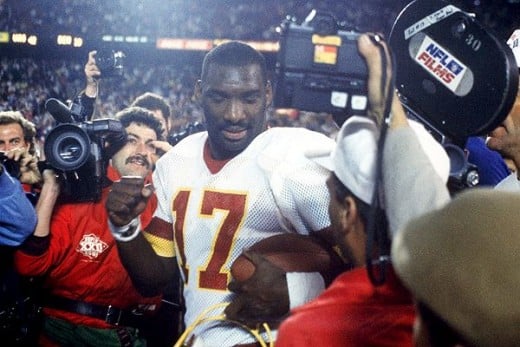
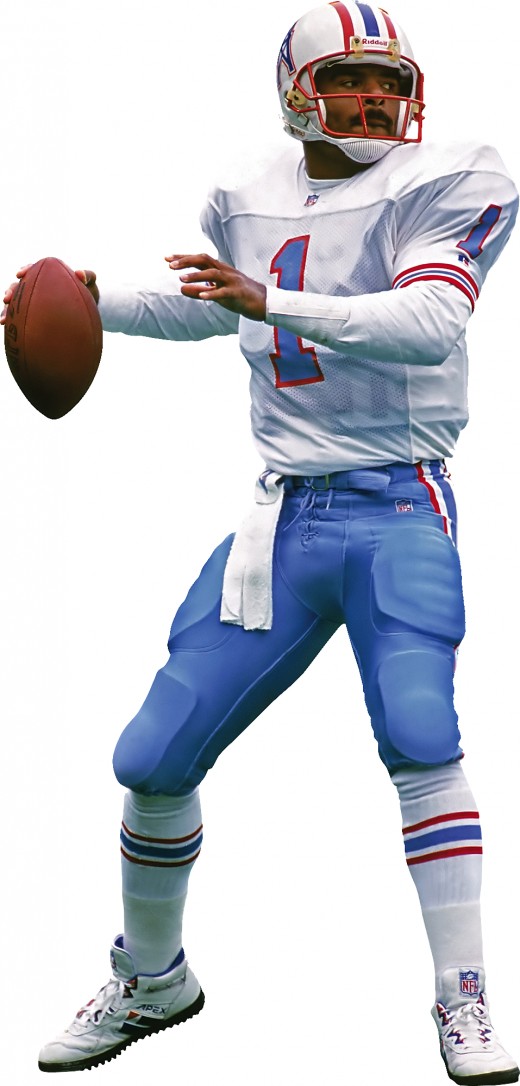
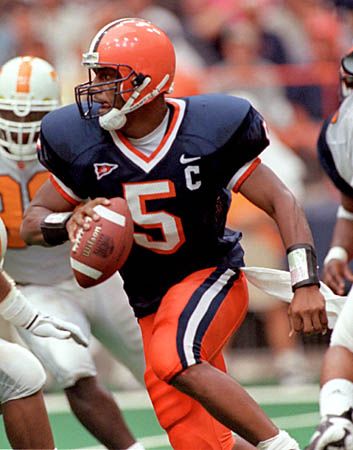
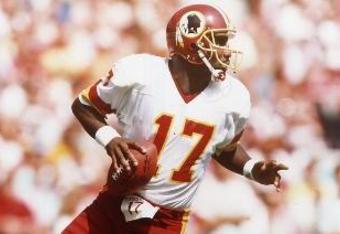
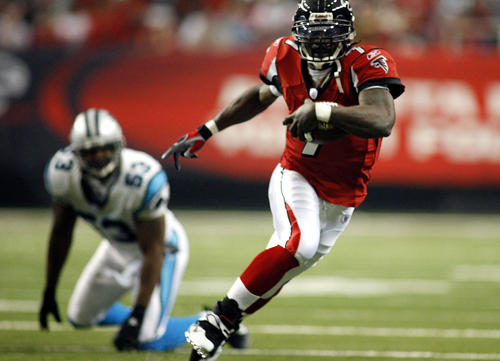
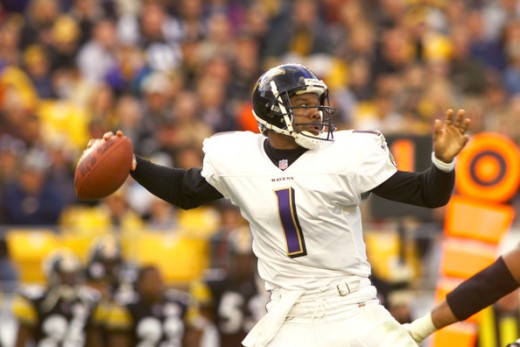
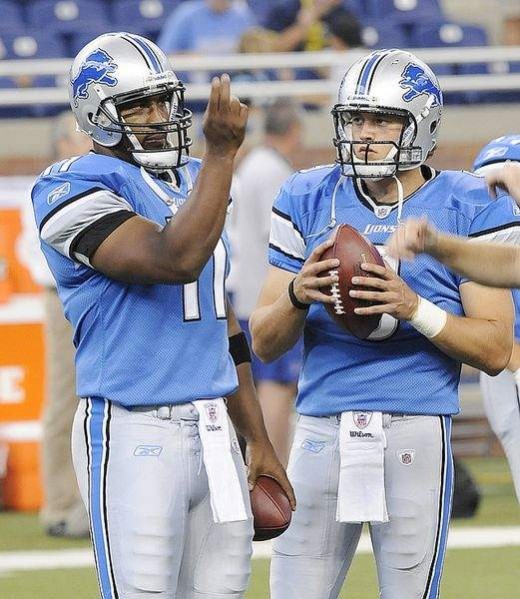
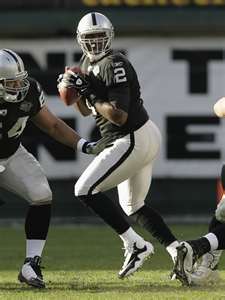
BAD MOON RISING: WARREN MOON
HOMETOWN: LOS ANGELES, CALIFORNIA
COLLEGE: UNIVERSITY OF WASHINGTON
CAREER: EDMONTON ESKIMOS (1978-1983), HOUSTON OILERS (1984-1993), MINNESOTA VIKINGS (1994-1996), KANSAS CITY CHIEFS ( 1999-2000)
INDUCTED INTO THE PRO FOOTBALL HALL OF FAME IN 2006
Growing up in Los Angeles, Warren Moon was a huge Rams fan. When Shack Harris took over as the teams quarterback, Moon can remember sitting in the stands and thinking that becoming a quarterback in the NFL was possible. A couple of schools such as Arizona State and Cal, were interested in Moon as a defensive back. Moon said, " No thank you." UCLA and USC were interested, but these were option running offenses and Moon did not want to be labeled as a running quarterback. Eventually it came down to Washington and Colorado. The promise of playing in the PAC-8 and having a chance to compete in the Rose Bowl gave the Huskies the advantage he was looking for, and he signed his letter of intent with the University of Washington.
The players and coaches were amazed by his poise and arm strength, but his greatest attribute was his leadership. He was born to be a leader and had a type "A" personality. During his senior year, Moon accomplished one of his lifelong dreams by winning the Rose Bowl over Michigan 27-20, in front of 106,000 people. Though he was an amazing talent with tremendous leadership qualities and an accurate cannon for an arm, no one in the NFL was inviting the Player of the Year, and Pac-8 MVP for a tryout. He wasn't even invited to the combines and Moon was very disappointed.
Instead of wallowing in self-pity like Gilliam and Briscoe, he decided to take his talents to Canada and play for the Edmonton Eskimos. The CFL has always embraced black quarterbacks. Of the 10 teams in the league when Moon got there, eight of them had black signal callers. Even though he was a little bitter about not being able to play in the states, he made the best of his situation and annihilated the league with his arm and intelligence. Warren didn't just play in the CFL, he owned the CFL, winning the Grey Cup Championship five years in a row.
Many black players were shocked and angered that Moon wasn't in the NFL. Tony Dungy use to watch in amazement at quarterbacks with sub par arms in the leagues and wonder to himself, "Why isn't Warren Moon in this league?" His big break came in 1982, when the NFL went on strike and Moon was showcased on national TV. He always had a suspicion that had we won one or two Grey Cups, he would never have gotten a sniff of the NFL. However, executives with their jobs on the line began courting the five time champ. The Houston Oilers, New Orlean Saints, Tampa Bay Buccaneers and the Seattle Seahawks became the leading bidders for his services. Moon would eventually settle with the Oilers, who offered him $5.5 million over five years with a record 4.5 million signing bonus.
The Oilers were in a rebuilding mode and little by little, they drafted players like Lorenzo White, Haywood Jeffries, Earnest Givens and and Alonzo Highsmith. He was the ultimate mentor who earned the respect of his teammates. He came close many times to leading his run and shoot offense to the big dance, but always seem to come up short. Most notably the 1993 playoff game against the Buffalo Bills comes to mind. With a 32 point lead going into the second half, the Oilers defense had a complete meltdown. The Bills scored 35 unanswered points, led by their back up quarterback Fran Reich. Many feel that was the Oilers best chance and Houston went to the playoffs seven seasons in a row with Moon under center, but never won the big one.
Moon played until he was 44 years old and accounted for more than 300 touchdowns. His 49,325 passing yards rank fourth in league history behind Dan Marino, Brett Favre and John Elway. However, if you include his six CFL seasons yardage number it totals up to over 70,553 total passing yards, some 9,000 more yards than Marino.
Warren Moon became the first black quarterback inducted into the Hall of Fame in 2006.
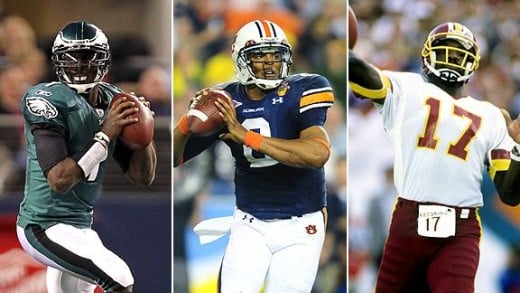
FIELD GENERAL ROLL CALL: PRO BLACK QUARTERACKS
- Tony Banks, Charlie Batch, Michael Bishop, Jeff Blake, Ed Blount, Marlin Briscoe, Aaron Brooks, Henry Burris, Jason Campbell, Quincy Carter, Reggie Collier, Dameyune Craig, Duante Culpepper, Randall Cunningham, Rohan Davis, Parnell Dickinson, Tony Dungy Vince Evans, David Garrard, Joe Gilliam, David Quinn, Shack Harris, Jarious Jackson, Tavares Jackson, J.J Jones,Shaun King, Byron Leftwich, Ray Lucas, Tee Martin, David Mayes, Donovan McNabb, Steve McNair, Warren Moon, Shawn Moore, Rodney Peete, Tony Robinson, Jamarcus Russell, Akili Smith, Troy Smith, Kordell Stewart, George Taliaferro, Willie Thrower, Willie Totten, Michael Vick, Seneca Wallace, Johnnie Walton, Andre Ware, Doug Williams, Anthony Wright, Spurgeon Wynn and Vince Young
In honor of the first black quarterback Willie Thrower, these are the black quarterbacks with at least eight attempted passes in their NFL career. The future shines brighter almost every season, although there is still a ways to go.
- American Football for Beginners
If you're anything like me, you don't have a clue what's up with this football thing. Well, after long talks with friends, I've been enlightened some, and so now I'm going to share what I've learned with you.... - American Football A-Z
Here is your quick guide to the NFL. A-Z covers the most basic knowledge about the league. A - Any Given Sunday Any Given Sunday is to football fans, what scarface is to American rappers and thugs. You... - The Best Black African-American Actors in Hollywood
The Best African-American actors in Hollywood There are many African-American actors in Hollywood and they are all great in their own rights. In this article, I will pay a tribute to most of them like : ... - Understanding American Football Ball
The ball is an important component of a football game - you couldn't very well play football without the ball part. But, you can't use just any old ball; strict rules govern the ball's size, weight, and even... - Deion Sanders - American Football Star
Former NFL cornerback and MLB outfielder, Deion Luwynn Sanders was born in Fort Myers, Florida, on August 9, 1967. Sanders is now a commentator for the NFL Network. During his time in the National Football...
